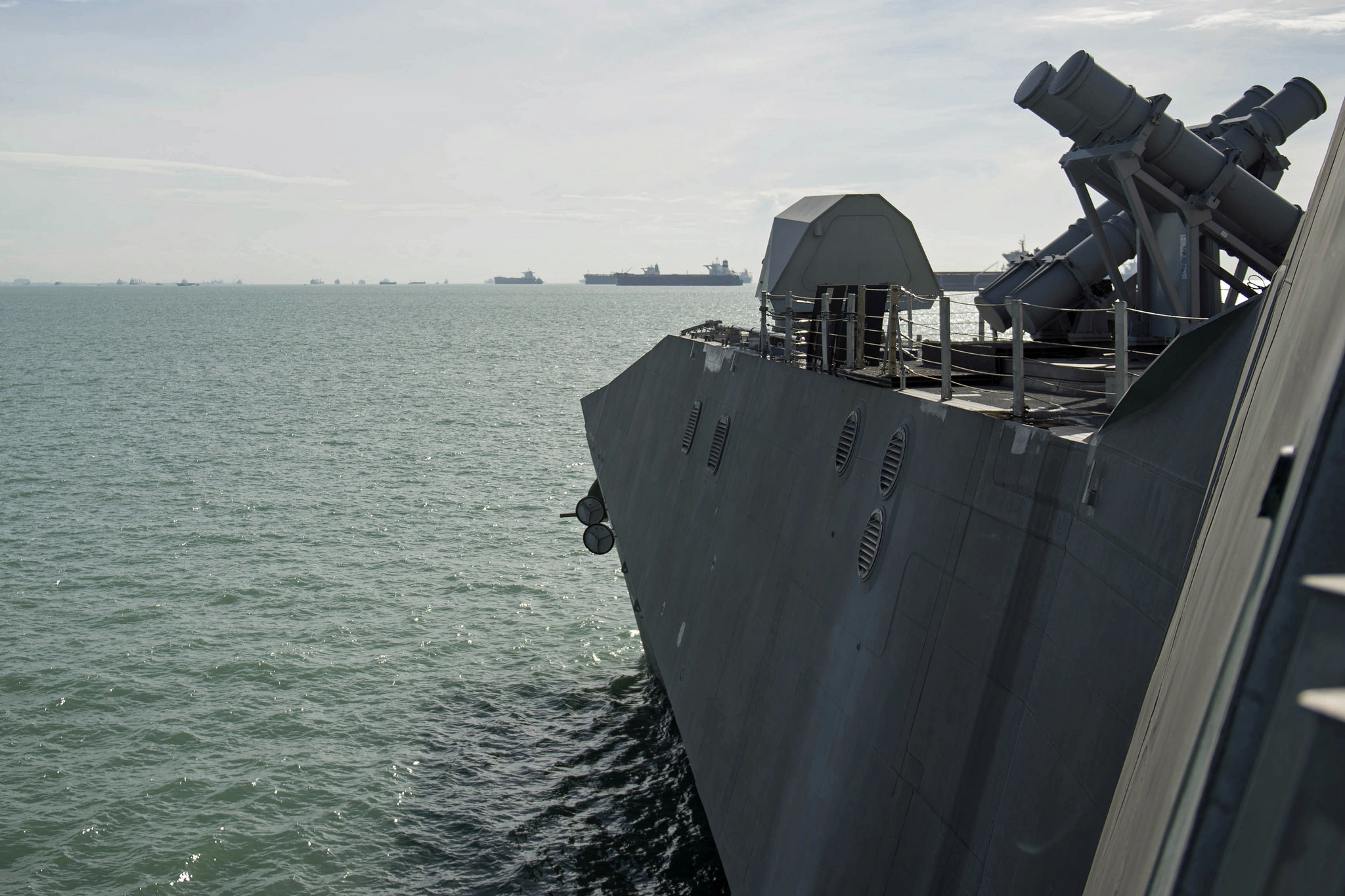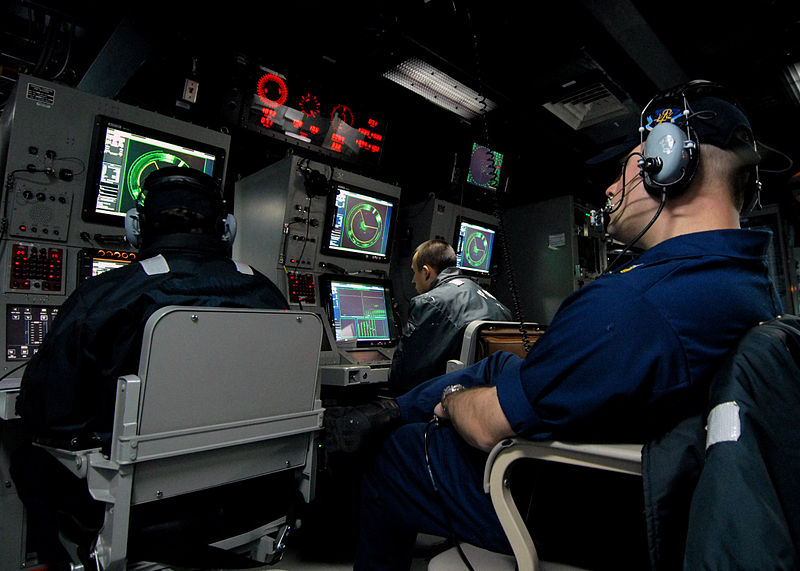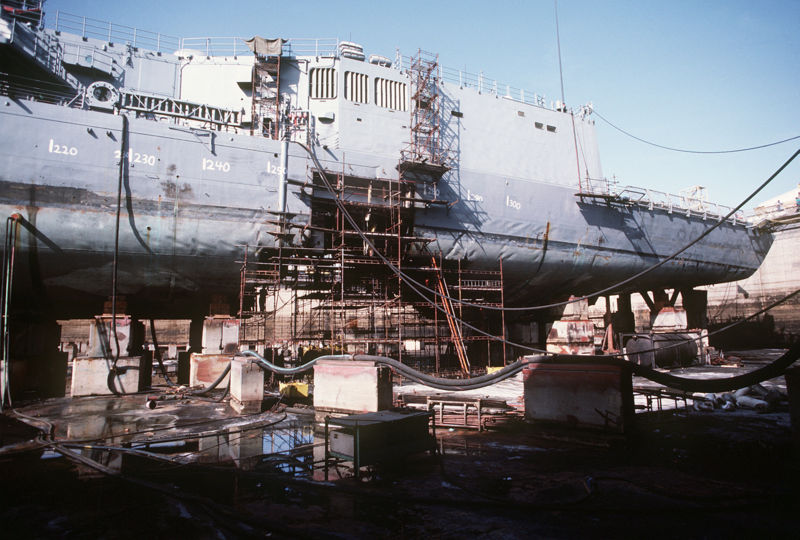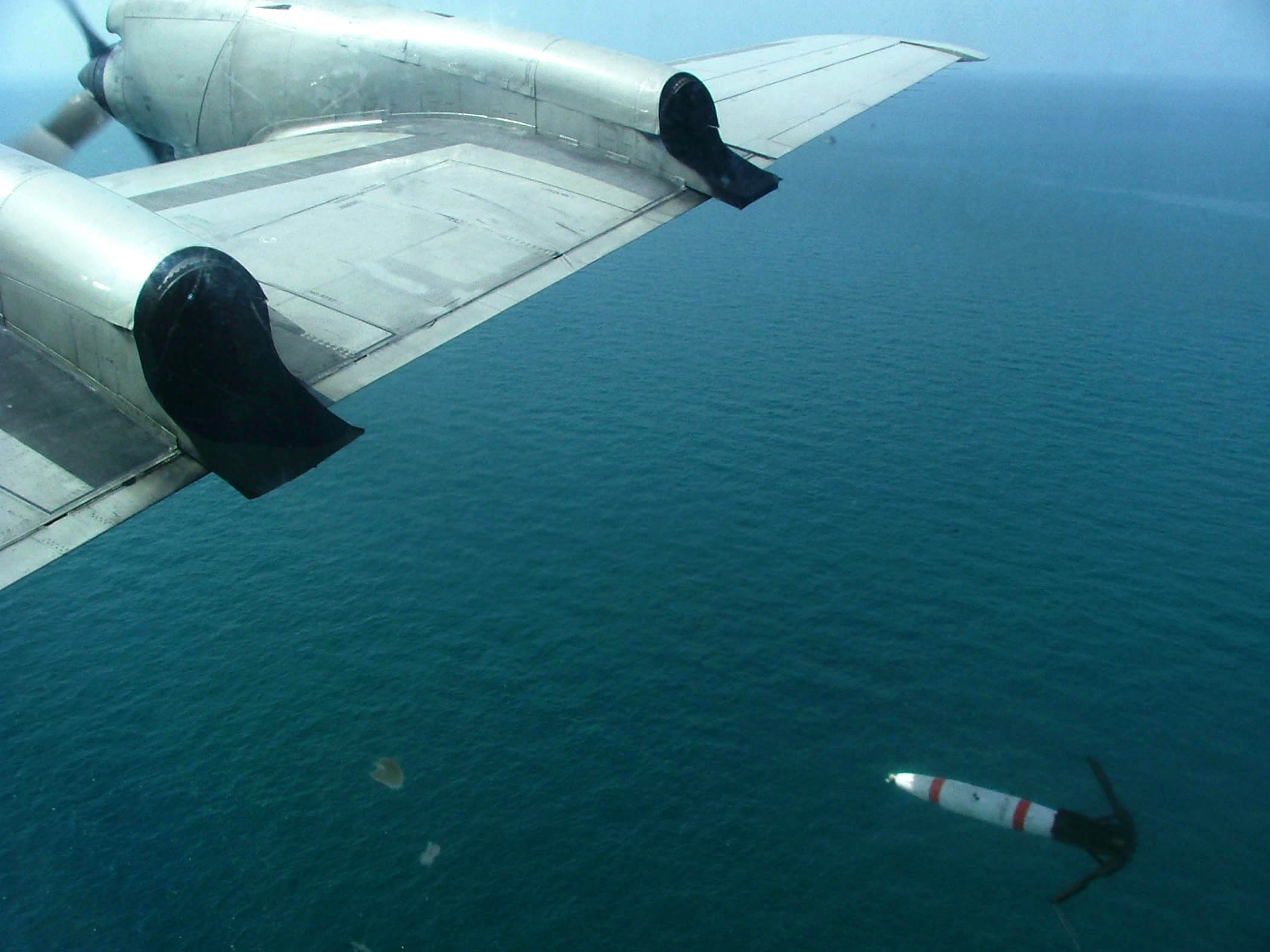By Sally DeBoer
The ushering in of a new administration on January 20th has many wondering what campaign promises will materialize and meaningfully affect the U.S. Navy. Is it reasonable to expect movement toward a “350-ship Navy” and, if so, what might such a Navy look like? Where can increased military spending be focused to have the most immediate impact on the United States’ readiness to address near peer competitors?
To answer these questions, we invited one of the United States’ foremost experts on American Seapower, the Hudson Institute’s Bryan McGrath, on this episode of Sea Control. Hosts Sally DeBoer and Mike also talk with Mr. McGrath about measures to increase force lethality, the newly established N50Z office and efforts to let strategy inform the budget, and burgeoning threats in the 21st Century.
Listeners interested in attending Mr. McGrath’s American Seapower Speaking Tour can find more information here.
Read on, or listen to the audio below. This interview has been edited for clarity and length.
SD: The first topic we’d like to discuss with you is fleet design. The forthcoming Trump Administration has, as part of its campaign promise, vowed to increase military spending and indeed establish a 350-ship Navy (as discussed by Steve Wills in his fantastic recent CIMSEC Article: A New Administration, A New Maritime Strategy). Due to sequestration and decreased funding for platforms in general over the past decade or so, as well as the Reagan-era platforms reaching the end of their service life, we are coming from behind. Where should money be spent to have the most immediate impact?
BM: With respect to the 350-ship Navy, I think the thing to keep in mind is that they have wisely not established a timeline for when they want to reach 350 ships. I’ve done a lot of work over the last few years looking at how the industrial base could flex to meet a larger navy and it seems to me that getting to 350 would be beyond anything but an emergency shipbuilding plan during two terms. What they ought to do is concentrate on getting us on a path to 350, articulate what 350 ships looks like, and create a sense of trust in the congress that the Navy can build ships cheaply and efficiently.
One way to get started on this, and obviously Steve Wills is one of the most articulate defenders of the LCS, is to build more LCSs relatively quickly. I have written an article on this for the Hudson Institute Center for American Seapower where I recommend building two ships per yard in ‘17 and ‘18, and then moving to the frigate design and conducting a competition where the winning yard would build the frigate starting in ‘19 and the losing yard would continue to build LCS through 25. These would be the LCS-plus that the Navy is going to bid on in ‘17 that will have surface-to-surface missiles and air search radar, from what I can tell. This would be one way to produce 12-15 small surface combatants between now and ‘25. That keeps those two shipyards in business.
I think industrial base concerns are important and I recently listened to a hearing on LCS where people were making fun of or dismissing industrial base concerns. I think that’s strategically inept. If we are going to build and maintain the world’s finest navy we have to have a strong maritime industrial base. Plus, the fact is that Wisconsin, where one of the ships is built, was part of breaking down that blue wall and helped elect Mr. Trump. Alabama, where the other ships are built, is the home state of his attorney general. There are political realities here.
The other political reality is Sen. McCain and his desire to move away from the LCS ASAP. I think the Navy could go a long way toward meeting Sen. McCain’s concerns if they articulate within the next year or so what the follow-on frigate is going to be and that it will acquire it at the latest by FY26. There’s a hole in the small surface combatant biplane right now during 4 years in the late 20s that we need to fill and keep building ships.
You asked how to get started – hot production lines can build LCS, and build more oilers. We need oilers and need to rebuild the logistics fleet which is far smaller than it should be. We should also consider ship-to-shore connectors, ocean-going tugs, and understand there are a bunch of ships that can be built quickly, on budget, and show that we’re going forward.
Importantly, in ’17 and ’18, and even more important than building ships, is plugging the holes in the maintenance and modernization of the entire fleet, and not just ships but depot level maintenance on aircraft as well. We are at the ragged edge of hollowness right now and if we decide to start building ships willy-nilly on a base of shifting sands when we haven’t addressed modernization issues then we are making a mistake. I think we can build ships and accomplish this, and plus-up personnel accounts so that we can move and train people. If we’re going to build the Navy 30% bigger then costs are going to be incurred that aren’t bound up in shipbuilding.
SD: To expand on this, what are the major obstacles you see to the 350-ship Navy and to building toward a bigger navy or putting a nation on that road?
BM: I think the biggest issue is that the president-elect made a 350-ship Navy an article of his campaign, he won the election, and navies never grow unless the president is behind them. The first thing is the president has to stay behind that goal. If indeed he does, it is likely to happen. It’s not guaranteed because his bankers on Capitol Hill have to write the checks. The one thing that I haven’t heard yet, but I imagine they’re hard at work on a story to articulate why we need 350 ships, where, why, how will they operate, to what extent, against whom and what threats? The thing that many people don’t realize about the 600-ship Navy in the Reagan era is that that number was rattling around for a while in the late 70s and it was an article of the election in 1980, but it wasn’t until Reagan came into office and John Lehman was able to tie the emerging thinking of some really visionary admirals in the pacific fleet to that number. You need to have a story. Congress won’t appropriate money until they know what the plan is and why. That’s the biggest problem.
SD: Speaking of a narrative, it seems to me as a non-expert, that the Republican party has moved toward the idea of non-intervention and Mr. Trump said yesterday (and I know there’s a difference between things said in promotion and things that actually happen) that there would be focus on non-intervention and just defeating ISIS as far as U.S. military policy goes. Does that indicate to you anything about his commitment to the Navy?
BM: I’m not sure I would say the Republican party has gone in that direction, but the president-elect of the U.S. and his support base have moved in that direction. I think there is a serious tension within the GOP. I am one of the other guys, I think about American exceptionalism and think the world is better with more America in it. The road to perdition is paved by trade wars and moving away from a global trade posture. So, the problem or the difficulty that I see in making the case for a 350-ship Navy is in the “to do what?” question. If you are going to lean on allies to pick up more slack and if Russia is not seen as a major threat, then a 308-ship Navy is probably sufficient, the one that is there now. In order to justify 350 ships you have to have a more global internationalist outlook, so there is some tension there. I think they can thread the needle, but it is going to be hard.
MK: I would like to bring up the decline in attack submarine numbers throughout the early 2020s. There are ways to figure that out, like building 2 Virginia-class SSNs and one Columbia-class SSBN-X a year, but that is going to have to get done and paid for or we won’t have that capability. The attack submarine force will sharply decline right about the time the Chinese undersea threat becomes more pronounced. Right now, having dry-dock space to maintain the fleet that exists is at a sheer premium if we’re going to talk about plussing up the fleet and there will need to be an increase in shipyard capacity for maintaining that fleet.
BM: This is a national strategic issue. The Navy and the U.S. military should defend free markets but we don’t have to practice them. There are sound military reasons for excess capacity – excess capacity that you would never maintain if you were running a business – you don’t want excess stock on the shelves. That’s not the way the military works, we need excess capacity so that we can ramp up and have a workforce that can do what you need it to do.
MK: The other thing I would add to that is we sort of, based on some dubious lessons from WWII, think that we can build ourselves out of any deficit at the beginning of a major war. That isn’t the history of WW2, most of the naval conflict was fought with platforms that existed at or programs that were underway in December of 1941. Second, the shipbuilding excess capacity that existed in the country at the time does not exist today. I am not saying that we’re headed for world war, but it’s a worthy intellectual exercise to think about how you would plus that up and recognize the time that it would take to make a massive change in fleet size inside of a strategic challenge would be prohibitive at this point with the complexity of ships that are being built.
BM: It isn’t going to happen. In those days American shipyards were building merchant ships, you could take that commercial capacity and turn it into cannibalized excess shipbuilding, tank, plane capacity, etc. It just doesn’t exist now.
MK: But it certainly does exist in China though!
SD: That’s a great point, and we talked about in an interview with Dr. Andrew Erickson of the Naval War College, who is the editor of the new book Chinese Naval Shipbuilding. Could you speak to the CNO’s recent OPNAV staff reform co-locating the assessment division with the strategy folks in the new N50 office. Reactions have been positive – people like the idea of strategy informing budget. What kinds of substantive changes do you think we can expect from this arrangement and are you generally in favor of it?
BM: Who could not be in favor of it? It’s like ice cream or air. It’s what we have all always wanted in theory, right? Every strategist or would-be strategist wants resources to follow strategy. I think the CNO is making all the right moves and saying all the right things but resources following strategy is hard, really hard. It’s challenging enough to have resources follow strategy when you are utterly in charge of all of the variables – like if you’re running a company and can put internal investments where you want them to go and enter new markets as you want to. The CNO and SECNAV don’t have those luxuries. They have to respond to national tasking and to national strategy, so I think there is great value in the exercise and in the attempt. I look forward to its success – I might not bet on it. I’m going to meet with the N50 people to talk about some of these things and maybe my opinion will change. I am looking forward to it. I do like that some of the folks from N81 are being dragged over there and that there will be a way to assign them or have some folks who are in charge of thinking about how the fight will happen and what will be the desired strategic outcomes pushing them rather than N81 making it up itself, which kind of appears the way it has been done for a long time.
MK: I am also in the wait and see category. I think no matter how good your intentions may be there’s a tendency in large organizations to sort of know the answer going in. I think there’s the potential there that we assign the answer before the answer is given. If we’re told to program to 350 ships we will find something to do with them, rather than try to take a top down approach, which may take longer, given our needs.
BM: I think the CNO is doing something even more intelligent and even more potentially beneficial to the navy than this N81/N50 alignment thing. And that is taking a more architectural look at fleet design and dividing up or thinking about that architecture through domains rather than platforms, and assigning a honcho to each domain who then works with the resource sponsors within that domain to create a program that serves the domain’s ends – threats, networking, weapons, sensors, platforms – in a more holistic and integral way so that you’re able to allocate functionality more efficiently in a domain without thinking about air, surface, and subsurface and other things separately. Think about fighting in that domain in the most efficient way and allocate functionality that makes the most sense. That could be truly revolutionary if it works.
SD: Let’s switch gears. Characterize the fleet’s current effort to increase lethality in terms of conflict with proto-peer competitors. Specifically, we talk about distributed lethality – which we know you’re an expert on – and would like you to speak to the command and control construct that would accompany DL and the kinds of training and experimentation the fleet will undergo to implement it.
BM: So I just gave a talk at the OPNAV staff/CNA Future Strategy Forum at the Navy Memorial. I was on a panel that was called “beyond distributed lethality” and one of the things I said was that it was gratifying to think that DL had become so integrated into thinking that we could now move beyond it. Some of that was tongue in cheek but not all of it.
The subject of my talk was split into two halves. The first was command and control and the second was combat systems. With respect to distributing lethality in the fleet, this includes things like maritime-strike tomahawk missiles, SM-6’s surface mode, OTH missile for LCS and SSC, and also SEWIP bloc 2 and 3. The Virginia Payload Module (VPM) in the submarine force is the granddaddy of DL in my view. Those guys were on that a long time ago and it really affected my thinking. The Navy’s doing a good job of spreading its weapons and that is important because it makes you harder to find, harder to attack, you get to attack the other guy from multiple angles, and you get to hold more of what he values at risk and through more ways.

The command and control of a distributed force is something that bears a lot of thought. The way I look at this is that there is a slider, a continuum, that describes an exquisite peacetime network and comms environment that I refer to as the pre-first shot state of the war environment. This involves very centralized control, very strict ROE – the kind of thing we exist in so we don’t get some guy popping off a shot at the ragged edge of the network starting a war. That requires a very sophisticated network with high confidence in communications. For peacetime operations that’s probably the appropriate manner of Command and Control whether concentrated or distributed. You’re still going to want to have centralized control over weapons employment in that environment.
You move that slider to wartime, “the knife fight in a dark closet,” where you’ve lost a good bit of your SATCOM, probably on HL, LPI/LPD kinds of comms, radio silence. Commanding and controlling those forces is a real challenge but it is something we have to think about in the bright light of peace while we aren’t fighting someone in that kind of environment. We have to be able to maintain as much war fighting capability as we possibly can as you move down the sliding scale toward dark and quiet from light and loud. We have to back up aerial layer networks, tactical receiving of satellites, and aerostats potentially. There’s all kinds of ways to set up networks and temporary networks. But we have to be investing money and thinking about it and imbue our commanders with a very honed sense of mission command and that is – go execute your last orders and oh, by the way, if we lose comms, use your initiative. Go kill people and wreck things.
MK: There’s sort of two ways to solve that. The first is by increasing your sensor payload on whatever you think your smallest unit of action is going to be. There’s a lot of inventive ways to look a little further over the horizon, and in the “knife fight in the dark closet,” the potential of mistakes is going to go up. In my view, I don’t think enough effort is being applied to trying to figure out how we’re going to integrate air assets into DL. I have a couple concerns with that, particularly because in a similar place the reason that Vincennes shot down that Iranian airliner in 1988, a part of it was because she was in the dark and couldn’t get her aviation support fast enough. The alert package launched off of the Forrestal and they burned to get there but they couldn’t get there in time. I think there could be a similar mistake, and in a modern 24-hour news cycle, this would look even more poorly. Look at what the Russians are going through having shot down an airliner. There is a lot of blowback from mistakes like that and so I am a little concerned. I would like to see an increase in sensor payload of those sorts of ships to give them a better look without national-level assets.
BM: There’s an interesting DARPA/Office of Naval Research joint program called TERN. It’s a medium-altitude long endurance UAV that would take off and land on LCS, future FF, DDG, and cruisers. I think that it’s a couple hundred pound payload, 14 hours in the air. It’s just a truck and then you decide what package goes on (comms, IR/ER, radar), so that’s one way to get around that problem. The other thing to think about though is – if we’re in the real knife fight, I should hope that mistakes will be tolerated. If we are in an environment where we’ve lost SATCOM and we’re fighting a first world power –mistakes are going to happen and you have to minimize them but I would hope that there would be some understanding.
MK: The Lusitania sinking by a German U-boat in a war zone, potentially carrying war material, had huge strategic impact. So no I don’t think so and the idea that the entire rest of the world while we and China go at it is probably not reality. So you know, to say nothing of some potential attempt to egg us on to do something. I don’t think that’s the case at all.
BM: Don’t get me wrong, you bring up good points, and your point about the rest of the world is well taken. If the U.S. and the PRC get into a scrap the pressure to end it quickly is going to be immense which has in my view, huge fleet architecture implications. You damn sure better have what’s out there in the fleet be a force that can deny or deter their aggression. If you can’t, their aggression becomes more likely because the probability of success becomes higher. I’m not trying to say we would willy-nilly shoot down airliners, what I am trying to say is that there will be mistakes, incredible mistakes when command and control is taken away, but I don’t know that we necessarily want to use the fear of such a thing to help design our force.
MK: I would generally agree. I am just arguing that the likelihood of mistakes will be lessened and the lethality of your basic unit of combat will be higher with some set of fast moving fixed wing aircraft that can look at OTH targets.
BM: Keep in mind one of the reasons DL is attractive is because you don’t need CAW, or you would need one less, because they’re finite and there’s a finite supply. They can’t be everywhere at once. This is the thing that I tell my aviator friends: in a first-world scrape, that air wing is going to be very busy not just doing strike but doing ASUW, hopefully someday ASW again, certainly doing ISR. I think the CAW is going to be incredibly busy, maybe too busy to provide air cover for a SAG out there alone and unafraid.
MK: I think that’s probably true and possible.
SD: With respect to increasing lethality, are there any initiatives you feel that don’t get enough attention from fleet leadership that could lead to increased lethality?
BM: Everyone gets all excited about lasers. Lasers have been just around the corner for 30 years and I think there are applications, they are coming, they are out there, but it’s not like I think, ‘If we just paid attention we could move it along.’ The technology is moving along at the rate that it can. Railgun? I like the railgun as a concept; I like it quite a bit. I think I like it more than anything in its ASMD role, if you could throw a high energy projectile that blows up and creates a lot of FOD in front of a missile that is a wonderful way to take it out and it’s cheaper than trying to do so with a missile. Again, railgun is moving along, someday we will solve the energy storage problem. Storing the power is the issue, not generating it. I would like to see a supersonic long-range ASM that could be fired from a surface ship or sub, I would like to see that in the inventory, and I am talking 500 miles or so. I’m relatively satisfied with the weapons, weapons programs, and sensors. What I am not satisfied with is the networking, the ISR, and the connective tissue among all the elements. What we don’t have is all the interstitial stuff that helps tie it all together.
MK: I think we’ve made some really good progress toward EW but I am not quite sure we’re there yet or have thought about what it’s going to take to fight in a heavy EW environment, both in EA or some sort of electronic defense and providing the frequency agility that we might need in a very complex EW environment. I agree and I think that the increase in lethality of surface ship ASW systems has really changed a lot of things with the way that you can do ASW. AN/SQQ-89(V)15 is really a change in model for the surface navy and it is a very impressive system.
BM: Great point, the surface fleet needs a weapon that can exploit the detection range of the V15. We need to get something headed out quickly toward that submarine in the 4th or 5th CZ to put it on the defense. Killing subs is hard, scaring them is easy. Bryan Clark has done great work at CSBA that showed we were much more effective in WWII at scaring subs away than killing them.
Speaking of EW, the second half of my discussion at the Future Strategy Forum was about combat systems and I made the case – I didn’t command a ship that long ago (2006), that ship is still in the fleet (USS Bulkley) – the combat system is essentially the same, but the kinetic combat system and the EW combat system were not the same system. They were integrated to some degree, but not fully.

We need, at the unit level, to have a single combat system that provides decision makers with automated battle management aids, provide strategies that help you conserve weapons, that tell you the better thing to do here is to jam this missile with this technique rather than shoot it with this missile or this gun – that kind of full integration of hard and soft kill EW with kinetics at the unit level is required. But then we have to take it to the next level and have networked combat systems in a SAG so the SAG can husband its efforts in the most efficient way, which leads you up to the strike group. You can get to a point where you have almost a web-based combat system that degrades gracefully down to the combat system that is in the ship providing end-to-end functionality within the ship – hard kill and soft kill – that can be networked among other units in order to conserve assets. We have to find a way where we are not going Winchester on the first salvo.
SD: We had a great debate on CIMSEC where two of our members debated the use of the term A2/AD, what are your thoughts about the CNO’s announcement to move away from that term doctrinally?
BM: First, I have always considered A2/AD to be redundant. A2 and AD are the same thing. It is sea denial – its keeping someone from doing something they wish to do in a chunk of the ocean. So the term itself is redundant. I don’t have any problem with what the CNO did. I think it is reasonable from the standpoint of trying to get people off their fainting couches. People overestimate the “kill zone” that is the Pacific Ocean. It is just not the case, it is looney to think that, but what I think he’s trying to do by eliminating that term is to make sure people understand that we have some tricks up our sleeves and can absorb some of this risk and fight our way in, fight our way out.
MK: I totally agree. He is saying that A2/AD presents it as a fait accompli rather than an aspirational goal is very well taken.
BM: Let’s face it; dealing with OTH radar – OTH radar has different characteristics at night and day. Sun spots, weather comes into play. What’s really needed is the ability in real time to heat map adversary ISR. We have to be able to see where the weaknesses and seams are and that’s where you go project power and do strike, then get the hell out and go do the next one. We can do that, we just have to think our way though it.
SD: I wanted to mention your American Seapower speaking tour. Can you tell our audience what that means, what you’re doing, and how they can attend?
BM: I think we haven’t been doing a good job of telling the American people the value of investing in their Navy and what the payoff is. My speaking tour is targeted to 23 different Rotary Clubs around Maryland. I have done 12 so far and I talk for 20 minutes and answer questions with a bunch of people who don’t ‘get’ the Navy. I am going to the far western edge of Maryland next week, a town called Oakland, and I’m going to talk to people about seapower. It’s a result of my frustration and my effort to try to do some good.
SD: I want to thank you for your time today, it was a true honor to have you on the show. Any last comments before we sign off?
BM: I love what you guys do, keep it up!
SD: Thank you very much, sir. Thank you also to our listeners and have a great holiday season.
Sally DeBoer is the President of CIMSEC for 2016-2017. The views of the guests are theirs alone and do not represent the stance of any U.S. government department or agency.











